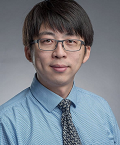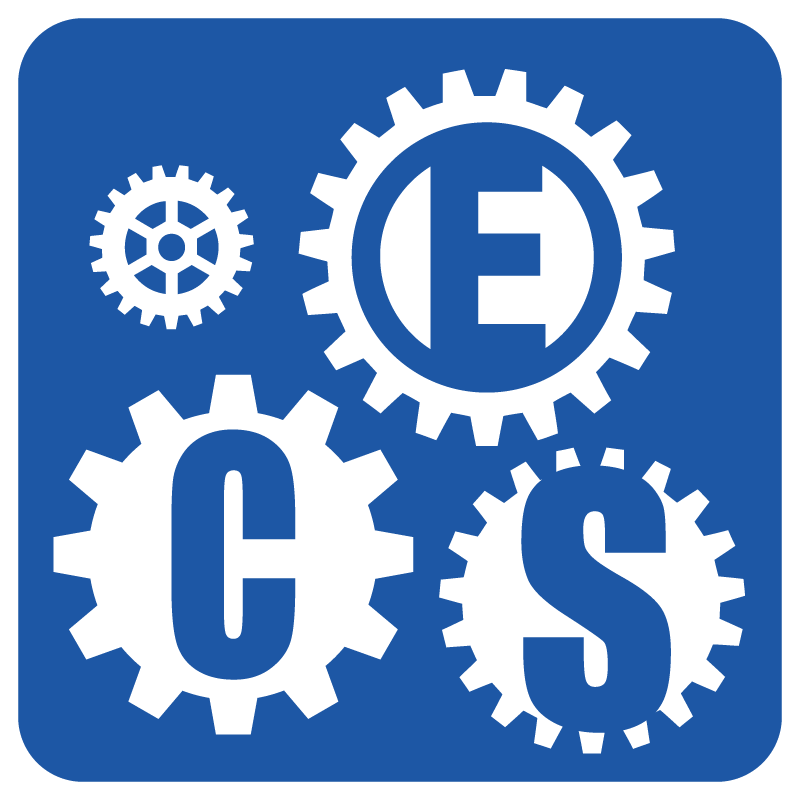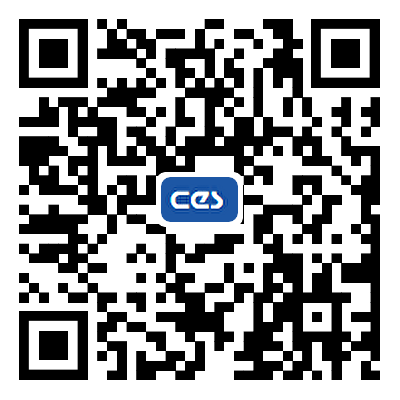Special Interview with Prof. Jiaqi Ma: Connected Automated Vehicles
On September 8, 2022, the Editorial Office of Complex Engineering Systems (CES) was great honored to interview Prof. Jiaqi Ma, Department of Civil and Environmental Engineering, University of California, Los Angeles, CA, USA. He is also an Associate Editor of CES.
Attracted by his recent research interests, we do the interview, the connected automated vehicles (CAVs) the hot spot in the research field for recent years, which also grab many scholars' attentions.
In this interview, Prof. Ma gives us his interpretation of his article and predict the future hot research areas, besides, suggestions and expectations also put for our journals. Let us take a look at the details:
Q1: We learn that your recent article “Evaluating the Effectiveness of Integrated Connected Automated Vehicle Applications Applied to Freeway Managed Lanes” refers to the market penetration of connected automated vehicle (CAV) will be low in the next decade. So what do you think the biggest challenges facing its application?
A1: Yeah, I think one of the most important things that we develop something applications no matter from the vehicle side or infrastructure side to improve to play, to make it be effective, make sure it play its effectiveness in early stages, so if you, for example we have five percent of connected automated vehicles in a traffic stream, it might not be helping your traffic flow at all, it might even deteriorate your traffic, according to some of the studies, the CAVs, you know, the isolated ultimately vehicles may even deteriorate traffic flow performance traffic flow stability, so just letting this one or two vehicles in a traffic system will not work, so we have to develop either infrastructure all the vehicles that applications make utilize the connectivity cooperation between vehicles to improve traffic systems.
Q2: At the end of this article refers to the case study using an interstate 66 network, could you please share with us the study focuses and progresses about your lab recently?
A2: Yeah, so the study is we develop one application that I think it is integrated application that has three CAV applications, one is platooning, we call speed harmonization, and the third one called cooperative merge and this application is developed for freeway operations, improving freeway operations and reducing previous traffic congestion, for example we all know that the freeway merge areas are always a big bottleneck of freeway traffic, so the reason called it as freeway bottleneck is that the merging traffic interacting making light changes interacting with the mainline vehicles and forcing light changes into the mainline and so on, so the cooperative light change is one way, cooperative merge is one way that we making them instead of a discretional light change all the time we have in this vehicle to cooperate with each other, where they communicate, they cooperate, negotiate and then they merge in a very smooth manner, so this is one example of this, you know, three applications we developed and eventually we want to try to test it in a real world network to see how this will help solve a real world problem, we're using this network that we developed for some other purposes, it's in the interstate sixty six in northern Virginia, so in US it's a freeway network, it's a very congested network, we calibrate that of of ten miles of the United States sixty six, it's a major corridor of connecting DC and northern Virginia and different cities northern Virginia, and we tried these three different applications against speed harmonization, cooperative merge and platooning, on this network we created, we test different scenarios as well, we want to understand if we create a manage lane which is a dedicated land for CAVs or we create a manage lane that can allow CAVs and other special use vehicles like high occupancy vehicles we used or we just let these vehicles be in any of the lands on I-66, we can't test the different scenarios, and sort of different infrastructure policies, so to see one of the most effective scenarios on the different market penetrations, in the beginning when there's a five percent market penetration of CAVs, it might be better to just let all the vehicles be on the same dedicated lanes, but us later when we have fifty percent i think the CAVs, these applications will have enough penetration on all different lanes and therefore we don't need this market penetration, so in this paper we kind of test it on a different market penetration, will that mostly effect infrastructure kind of policies, infrastructure scenarios as well, in addition to different parameters of these three different applications, different algorithms different parameters of vehicle control, and we talk about infrastructure type of scenarios as well.
Q3: At the moment, what is the most pressing problem you want to solve in your field of research?
A3: In this area right, so yeah I think time to continue developing different effectiveness of CAV applications, it's important, again we develop these three applications in our paper and actually a few other related work we keep on understanding these three different applications and different forms of that, for example we have recently did additional work on platooning and cooperative merge, but it is really a more advanced version, platooning we tried to, we call it a platooning with organized behavior and we're going to have a new paper published soon, and it's really an enabled better cooperation between platoons, between platoon members, I organize them better and improve the traffic system better. We enable multi-lane operations of the platooning instead of just a single lane platooning, so there's a lot of possibilities, parameters these applications can have and I think there is a lot of rooms for different researchers to work on these different topics, and as always we have conduct a lot of simulation just like our team, like this paper you talk we are talking about here, simulation, evaluation, and only one hand the simulation of CAVs is still evolving very fast, we don't have a very standard, good way of doing this type of simulation, and in fact because of the existence of different simulations in the market to different research, the people using kind of different standards of simulation and that the results are not even comparable, some in the same scenario with them in different simulation can include different results, so that's kind of the need to be improved with some standardized simulation standards and also simulations need to be well calibrated, we don't have that many data of CAVs like our team, we continue to do experiments with different partners and collect some data, for example we just did between experiment and collect some data, we hope this data will better inform simulation eventually, in Los Angeles, it's always taking the pilots of connected auomated vehicles, pilots with real vehicles, or a group of real vehicles on the roadways to see how that will eventually impact traffic systems, I think it's also very critical, because you want to understand what's the real impact in real world, I think there's a lot of future directions of this work can lead to.
Q4: As a senior scholar in the field, could you predict the hot spots of this field in the future?
A4: Hot areas or I will say the areas that need most research, you know I think that the CAV research has been here for many years, we started almost ten years ago, and we see a lot a huge increase of CAV researches no matter in transportation community or in, for example, an electric engineering community and computer science community and so on, and we see even recently in a social science community, where people started to learn, study about the social impact of these new technologies, I think as this technology becomes more and more mature, and an automation, automated vehicles and connected vehicles will have, will transform transportation system completely, and there's a lot of different areas that need to be studied, not just engineering aspects, but also as I said social science and aspects, even you know aspects that in psychological aspects where people's behavior, people's attitude to all these technologies, and how they will impact their lives and so on, it's all important, and two things I want to mention, the systematic things we can talk about here about two things I want to mention one is that the researchers of different fields, because this is such a interdisciplinary field, they gotta talk to each other, so far I still see the question of transportation field researchers doing their thing, but the computer science community doing their own thing and the system develop cannot even be not that compatible with each other, so I think such an interdisciplinary community they need to talk, the second thing is about the impact, such a technologies on the society as a general, it's a broader impact, for example, will the CAVs or AVs when they're available, no matter its own personally owned AVs or shared AVs really accreditably impact people across the city people with low income, will they actually be subject to or even this progressional impact, negatively impacted by these technologies because they cannot have access with this new technology, but there may be subject to some negative externalities caused by these technologies, so this is a lot of the social impact studies need to be studied, so whenever you introduce a new technology, it will change, make a significant impact on these aspects and this needs to be very well studied and the system has to be carefully designed.
Q5: As an associated editor of the journal, do you have some suggestions and expectations for our two-year-old journal?
A5: Yeah, I think it's very informed in journal, I think one important thing is that we should attract probably high quality papers, I think usually through the invited papers have special issues, for example on this selected topic like I can on my field like create a topic of interests, like what we're talking about today, and we attract high quality papers where we invite the famous researchers to kind of their research teams contribute to our journal, I think that's critically important, and I always have this idea to sort of using this special issues as the collection of the new directions, opportunity to collect the latest ideas of the best researchers in the world, and present the comprehensive picture of how this thing is developing in the future, what I talk about today is probably how my research team is addressing this, you showed a lot of other research teams that may thinking of this thing differently, I think it's a good opportunity to collect and it will impact the journal as well, as a special issues collection, it will help increase the awareness of journal as well.
Q6: As an author, what factors put more consideration when you submitting a paper?
A6: Researchers have opportunities to access the paper directly, sometimes even me, I have University of California subscription but sometimes even for me it's hard for me to download some papers as well, so I think it's definitely a good thing, one exception, sometimes the open access journal comes with a fee that researchers we don't have the budget to publish with open access fee maybe not submitting papers because of that, but there could be other ways to kind of, if it call for paper, invite paper, there are ways to improve that, and it becomes less of an issue as more and more universities have the policy to support, where their libraries have the poster support open access publication, so that's happening at UCLA and other places as well, so I fully support the open access model absolutely.
Biography of the interviewee:

Dr. Jiaqi Ma is an Associate Professor at the UCLA Samueli School of Engineering and Associate Director of UCLA Institute of Transportation Studies. Prior to that, he was Assistant/Associate Professor and Academic Director of the University of Cincinnati Advanced Transportation Collaborative, Project Manager and Research Scientist with Leidos working at the Federal Highway Administration Turner-Fairbank Highway Research Center, and a contractor researcher at the Virginia Transportation Research Council of the Virginia Department of Transportation (DOT). He has led and managed many research projects worth of a total value of more than $ 16 million funded by U.S. DOT, NSF, state DOTs, and other federal/state/local programs covering areas of smart transportation systems, such as vehicle-highway automation, Intelligent Transportation Systems (ITS), connected vehicles, shared mobility, and large-scale smart system modeling and simulation, and artificial intelligence and advanced computing applications in transportation. He is an Associate Editor of the IEEE Open Journal of Intelligent Transportation Systems and Journal of Intelligent Transportation Systems. He is Member of the Transportation Research Board (TRB) Standing Committee on Vehicle-Highway Automation, Member of TRB Standing Committee on Artificial Intelligence and Advanced Computing Applications, Member of American Society of Civil Engineers (ASCE) Connected & Autonomous Vehicles Impacts Committee, Co-Chair of the IEEE ITS Society Technical Committee on Smart Mobility and Transportation 5.0.







